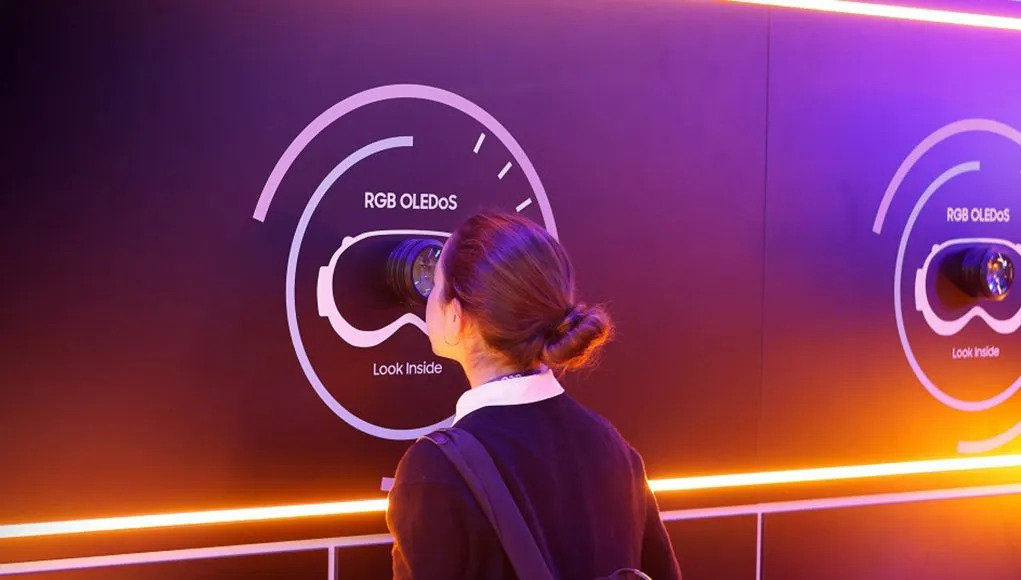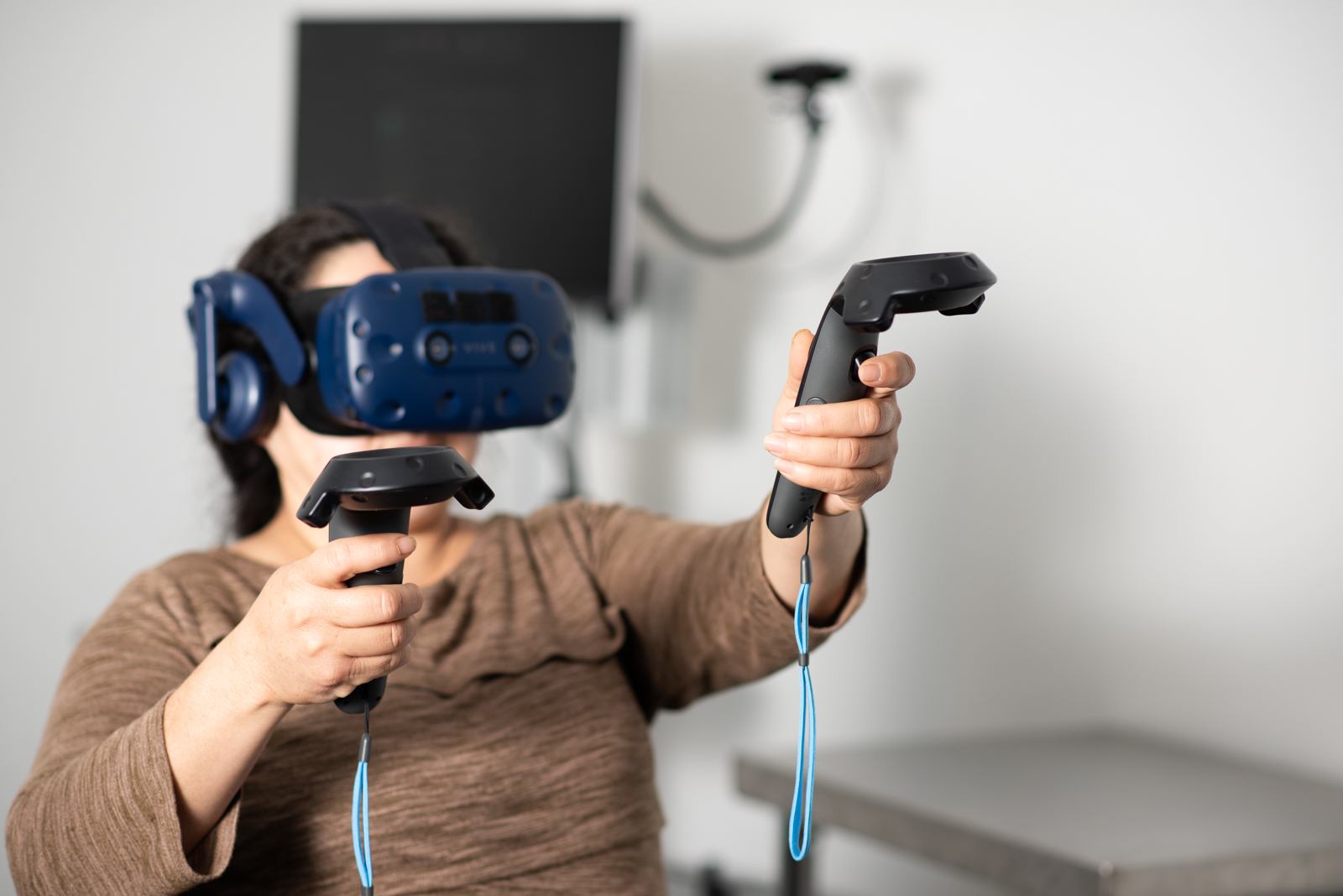Long-term space travel disorients the body, leaving astronauts unable to walk. One Nasa neuroscientist is using VR to help astronauts cope when they arrive on Mars
It lasts around 23 minutes and feels “like going over Niagara Falls in a barrel, on fire, then crashing really hard.”
That’s how retired Nasa astronaut Ron Garan describes the returnfrom space, strapped into the tight confines of a Soyuz capsule plummeting through the atmosphere back to Earth. The touchdown, slowed by a parachute and – at the very end – six small rockets, is called “soft,” but in reality it’s extremely rough.
We’ve all seen the scenes once the capsule has landed – astronauts and cosmonauts being carried away from Soyuz and carefully lowered into chairs. This is not a precaution; people returning from space literally cannot walk. The reason, however, is not the rough re-entry, but the fact that while in space, they have kind of lost their legs – albeit temporarily.
Astronauts returning to Earth after a long stint in space are so badly disorientated that they usually can’t walk properly for 24 hours or longer. Turns out human brains function differently in space and when an astronaut gets back, it takes his or her brain some time to re-train itself. Now Marissa Rosenberg, a neuroscientist at Nasa, plans to use virtual reality headsets as a tool to short-cut the training.
Rosenberg has seen it with her own eyes – meeting astronauts three times just after their Soyuz capsule had come down with a thud in the desert near Karaganda in Kazakhstan. “They’re dizzy and motion sick,” she says, after having presented her research at PauseFest conference in Melbourne earlier this month. One disorienting aspect of it is something called the ‘otolith tilt translation reinterpretation’ – a mouthful, she laughs, so researchers simple call it ‘Otter’.
It’s a theory that when you go into space, the organs in your inner ear function differently from how they work on Earth. On the ground, the inner ear will normally sense translation – any sort of linear acceleration, so going up and down in a lift, or left and right, or starting a car and stopping the car, as well as tilt. “If you were to tilt your chin down in space, however, the inner ear stops sensing tilt and only senses translation,” says Rosenberg. That’s where the name comes from – you’re reinterpreting that signal, which once meant both translation and tilt. Now, it only means translation.
Researchers say our brain is ‘plastic’, which means it learns pretty quickly, within a few days – and for some reason, the brain doesn’t care why the inner ear no longer senses tilt.
Here’s how it works. Imagine the brain as a box with jelly, and hair cells poking up through that gelatinous matrix. On top, there are little calcium stones called the otolith. Say you are holding this tray of jelly in a car and someone slams on the brakes, the jelly and everything on top will bend back a bit. The hair cells are attached to a nerve, and when they bend, they send the signal on the nerve we’re bending – you’re stopping or accelerating, or you’re going up or down.
Now if you tilt your box with jelly down, gravity will pull and flex those hair cells. On Earth, your brain all by itself has no way of telling the difference between tilting and translation from that organ alone, says Rosenberg. “Obviously, with the input from eyesight, our neck muscles and other organs, I can tell if I’m doing this, or if I’m accelerating in a car. The brain figures it out,” she explains.
But when you go into space, and you’re holding your jelly and a crew member pushes you really fast, you’re still going to get that deflection of the otolith above your hair cells because they still have mass and thus inertia. But when you tilt the box – well, your head – down, they’re not going to pull on the hair cells because there’s no gravity acting on them. That’s why the brain senses one and not the other.
For astronauts coming back to Earth, when they look down to grab, say, a coffee cup, they feel like they’re zooming towards it, while in real life the distance to the coffee isn’t shrinking at all. “That is a huge source of the disorientation,” says Rosenberg. The same with turning corners – they suddenly stagger. “We think that’s the same thing that when they turn their head this way, they feel like they’re moving,” she adds.
The brain re-learns pretty quickly – within 24 hours it’s recovered by about 70 per cent, while over two weeks it recovers around 98 per cent, says Rosenberg. When you’ve got “a whole village,” as she puts it, to pull you out of Soyuz and take care of you, this is not a particularly big problem. Plus there’s the official support: a military helicopter with a medical team on board can spot the capsule from far away, and as soon as it touches down, the helicopter is on the ground – and at the capsule within 45 seconds. “It’s incredible – within 15 minutes, they get a giant tent off the plane, inflate it, it has power thanks to a generator, it’s really spectacular to see,” says Rosenberg.
But what if humans were ever to land on Mars? There won’t be anyone to pull them out. It’s also an issue in the nearer future, once US astronauts finally start using American crafts to go back to Earth again, especially when it’s a capsule like Orion, which is designed to land on water. The crew may need to get out by themselves, especially if there’s some emergency on board such as a fire. In their current state, says Rosenberg, they are unlikely to be able to do that.
And that’s where virtual reality comes in. For the past few years, Rosenberg has been experimenting with VR headsets, training subjects to be much less disorientated upon their return from space. For this part of the study, she’s not yet working with astronauts, but her test subjects have been simulating trips to Mars and back – in effect, simulating otolith translation reinterpretation, or Otter.
First, a test subject is put in a virtual environment that looks like a flat Martian plane, with mountains on the horizon to navigate. To trick the brain, however, their view of “Mars” is overlayed with a checkerboard. This transparent grid is not fixed to the direction where they are looking at; instead when they swivel their head, the checkerboard moves with their vision. “It’s an autokinetic illusion that makes you feel like you’re in motion when you’re not. So when they would turn their head to the left, the checkerboard moving makes you feel like you’re linearly moving to the left.” In effect, Rosenberg takes a number of problems with VR – dizziness, confusion, disorientation – and uses them to her advantage.
Without training, your body would simply falter and fall over. Over four consecutive days, her test subjects walk about 200 steps for about 20 minutes, with disorientation and without. At the end of this training, they are able to walk without falling over – regardless of whether their vision is being disoriented or not. Three months later, she tested the same people again, and could show that they had retained enough of their training to avoid falling over even when they saw the autokinetic illusion. “That means we can train [astronauts] on Earth, and they’ll have the benefits when they come back,” she says.
It’s not certain yet whether Rosenberg will be able to test her findings on real astronauts, though. At Nasa, researchers routinely put forward rival proposals to solve a problem, and only will get the nod to go ahead. If hers is selected, she hopes to work with the team training astronauts. But can VR really help astronauts, considering that – despite years of hype – VR has been incredibly slow to gain momentum?
“Simulation has been used for decades to successfully train pilots and there is use of virtual reality simulation training in the military,” says Erica Southgate, a VR expert at the University of Newcastle in Australia. In education, the most common use of VR is indeed in training scenarios, she adds – helping people acclimatise to conditions before they are actually in them.
But how to use VR or other immersive technologies for higher-order thinking tasks is less well known, says Southgate.
For example, for an original creative task or a situation that requires reasoned evaluation and decision-making in circumstances where there may not be a clear-cut answer. “Right now there is a lot of excitement around immersive VR and education,” she says. “What is required are interdisciplinary approaches involving collaborations between psychology, computer science, biomedicine, education and the arts,” – for more rigorous research.
Still, users of the online virtual world Second Life have reported improvements in their physical movements in real life after navigating through their virtual settings, says Becky Inkster, a psychiatrist at the University of Cambridge. “There is definitely potential to alter the brain’s plasticity and create adaptive responses to its real and virtual environments.”
Tuong Nguyen, a Gartner analyst, says that we’re still currently in exploration mode with VR – both in terms of what can be done and what the potential outcomes are. For example, Lucile Packard Children’s Hospital in the US has been using VR for pain mitigation. “I think there’s potential use for VR to provide an immersive experience that can give people practice and experience with real life situations, whether it’s learning certain tasks, acclimating yourself to unique and demanding situations, or improving on current decision-making abilities,” says Nguyen.
But the technology has to evolve first. He says that headsets need to become lighter, smaller and cheaper, and that manufacturers have to solve the problem that for some users they cause dizziness and nausea. Still, VR offers an advantage in high cost, high insurance and high risk-type situations – such as for astronauts. “I think of technology as a marathon, not a sprint. We didn’t go from carphones to smartphones. We’re on the cusp of something very exciting, but it will take a few years for all the pieces to come together to make that happen.”
Quelle:
https://www.wired.co.uk/article/nasa-virtual-reality-training-for-astronauts-mars-missions



